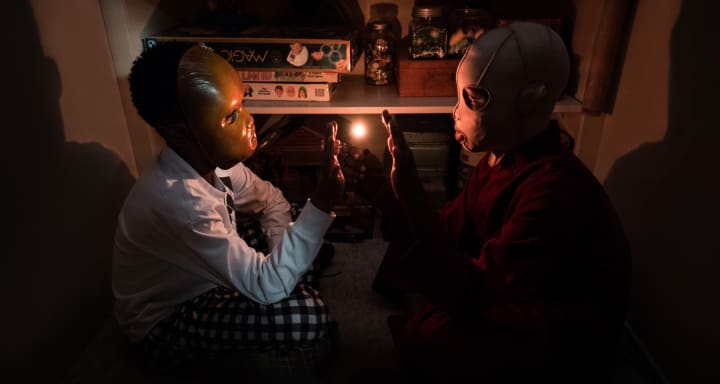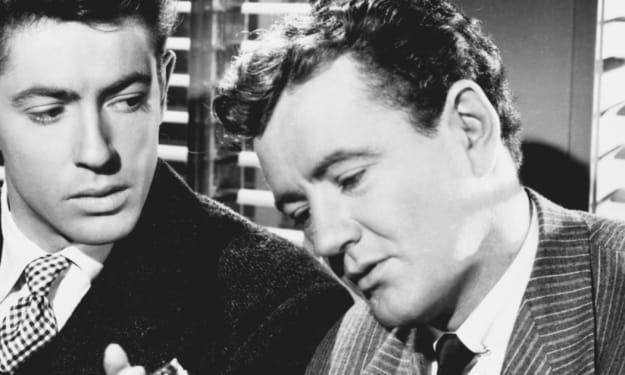A Filmmaker's Guide to: Doppelgängers
Film Studies (Pt.47)

In this chapter of ‘the filmmaker’s guide’ we’re actually going to be learning about literature and film together. I understand that many of you are sitting in university during difficult times and finding it increasingly hard to study and I understand that many of you who are not at university or not planning on it are possibly stuck of what to do, need a break or even need to catch up on learning film before you get to the next level. This guide will be brief but will also contain: new vocabulary, concepts and theories, films to watch and we will be exploring something taboo until now in the ‘filmmaker’s guide’ - academia (abyss opens). Each article will explore a different concept of film, philosophy, literature or bibliography/filmography etc. in order to give you something new to learn each time we see each other. You can use some of the words amongst family and friends to sound clever or you can get back to me (email in bio) and tell me how you’re doing. So, strap in and prepare for the filmmaker’s guide to film studies because it is going to be one wild ride.
Doppelgängers
What are they?
Look a-likes that are the result of a phenomenon, a storyline, or a plot device that are normally seen as bad luck, misfortune and/or violence and death. They are viewed in many mediums and are very popular amongst literary and film techniques as complex characters.

In literature, there are many references to the Doppelgänger character and not all of it is extremely bad, some of it is bad by suggestion and some of it is simply bad by design. Hardly ever is the Doppelgänger there by malicious intent to begin with, but it grows throughout the plot. This is the plot device of the Doppelgänger. Here are some texts you might want to read on the fictional production of the Doppelgängers and their storylines:
- Prometheus Unbound by Percy Bysshe Shelley
- The Devil's Elixir by E.T.A Hoffmann
- The Double by Fyodor Dostoevsky
- Descent into Hell by Charles Williams
- Books of Blood by Clive Barker
- The Outsider by Stephen King
- Glamorama by Bret Easton Ellis
- The Likeness by Tana French
- Alice in Wonderland by Lewis Carroll
- The Prince and the Pauper by Mark Twain
What about in film?

In film, Doppelgängers are often malicious and are often there for the very cause of pain to the character they imitate. Here are some films you could watch in order to explore the way in which the Doppelgängers operate in cinematic history. They are all from different eras and countries so that you can see how the malicious intent grows and changes both sides of the characters' lives:
- The Student of Prague (1913)
- The Man Who Haunted Himself (1970)
- Us (2019)
- The Double (2013)
- The One I Love (2014)
- Doppelgänger (1969)
- The Double Life of Veronique (1991)
- Gentlemen of Fortune (1971)
- Annihilation (2018)
- The Miracle (1912)
All in all, the Doppelgänger complex is something that is difficult to write into a film because the Doppelgängers must serve as some kind of plot and storyline on their own that is also attached to the main message of the film. However, it is not impossible and if you are looking to write them into a film you should concentrate on personalities. If your character is one personality then the Doppelgänger should be the exact opposite because then not only will it be accurate but you will also be able to work the storyline around it. The easiest way is to make the character an introvert and the malicious Doppelgänger an extrovert because this will make it easier for the Doppelgänger to be malicious outwardly. That’s just a tip, but obviously you can read about it in our further reading section which will concentrate on some key primary texts of the Doppelgänger complex and how it is viewed in different genres of fiction.
Further Reading:
- Carroll, L (2003). Alice's Adventures in Wonderland and Through the Looking Glass. 2nd ed. UK: Penguin Classics.
- Dostoevsky, F. (2016). The Double . UK: Alma Classics
- Easton Ellis, B (2011). Glamorama. USA: Picador
- King, S (2019). The Outsider. USA: Hodder Publications
- Shelley, P (2009). The Major Works. UK: Oxford World's Classics
About the Creator
Annie Kapur
200K+ Reads on Vocal.
English Lecturer
🎓Literature & Writing (B.A)
🎓Film & Writing (M.A)
🎓Secondary English Education (PgDipEd) (QTS)
📍Birmingham, UK






Comments
There are no comments for this story
Be the first to respond and start the conversation.